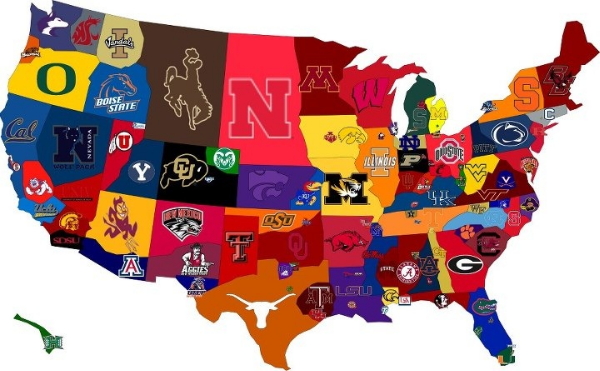
Modern day football fandom has carved out their territories!
Here is what we are reading today:
“The researchers from the University of Birmingham found that, compared to typically developing youths, those with behavioural problems show grey matter reductions specifically within the amygdala, the insula, and the prefrontal cortex.
These brain areas are important for decision-making, empathic responses, reading facial expressions and emotion regulation; key cognitive and affective processes that are shown to be deficient in youths with behavioural problems.”
“A pesticide used prior to the early 1980s and found in milk at that time may be associated with signs of Parkinson’s disease in the brain, according to a study published in the December 9, 2015, online issue of Neurology.
“The link between dairy products and Parkinson’s disease has been found in other studies,” said study author R. D. Abbott, PhD, with the Shiga University of Medical Science in Otsu, Japan. “Our study looked specifically at milk and the signs of Parkinson’s in the brain.””
“Twelve percent of U.S. children and teens had a diagnosis of Attention Deficit/Hyperactivity Disorder (ADHD) in 2011, a number that has jumped by 43 percent since 2003, according to a large national study based on parental reports of an ADHD diagnosis. This analysis suggests that 5.8 million U.S. children ages 5 to 17 now have this diagnosis, which can cause inattention and behavioral difficulties, says lead researcher Sean D. Cleary, PhD, MPH, an associate professor of epidemiology and biostatistics at Milken Institute School of Public Health (Milken Institute SPH) at the George Washington University.”
“Along with adding to the trove of research that shows these games can improve eye-hand coordination and reaction time, this finding shows the potential for novel virtual approaches to helping people who lose memory as they age or suffer from dementia. Study results appear Dec. 9 in The Journal of Neuroscience.
For their research, Craig Stark and Dane Clemenson of UCI’s Center for the Neurobiology of Learning & Memory recruited non-gamer college students to play either a video game with a passive, two-dimensional environment (“Angry Birds”) or one with an intricate, 3-D setting (“Super Mario 3D World”) for 30 minutes per day over two weeks.”
““When I became interested in this aspect of ethology I went through the scientific literature and I discovered that, however, the ability to recognize their own image in the mirror is a skill extremely rare in the animal kingdom,” Roberto Cazzolla Gatti said. Until now, only humans and great apes (gorillas excluded), a single Asian elephant, some dolphins, Eurasian magpies, and some ants have passed the test of mirror self-recognition (MSR). A wide range of species has been observed to fail the test, including several species of monkeys, giant pandas, sea lions, birds, and dogs.”
We don’t know if microbes are generally important in mediating chemical communications, but…


0 Comments